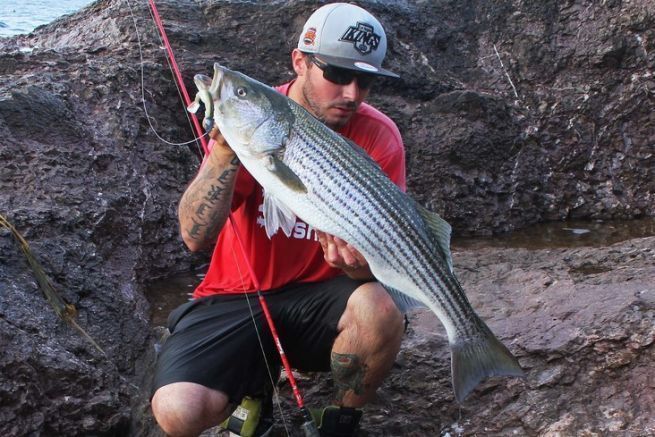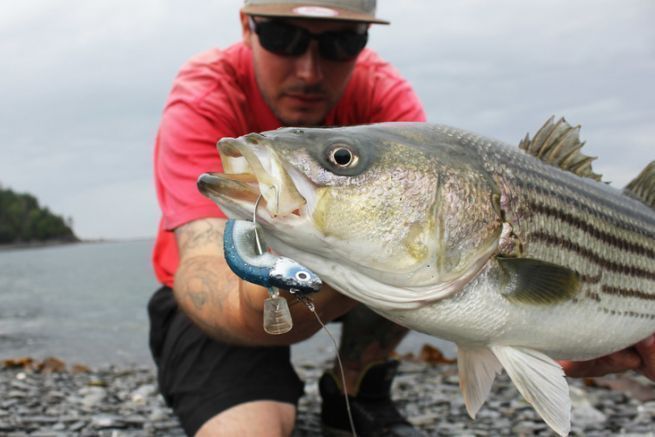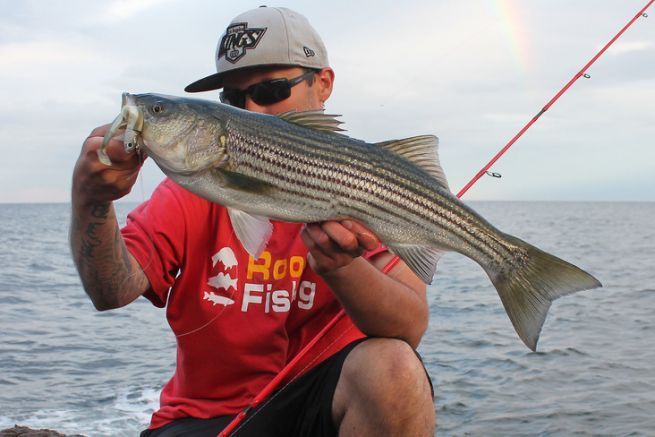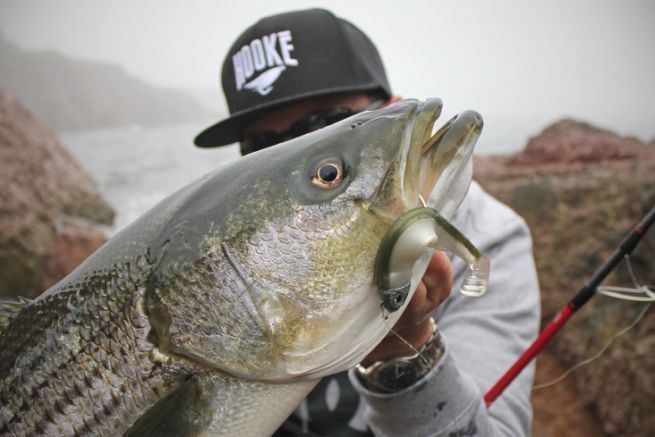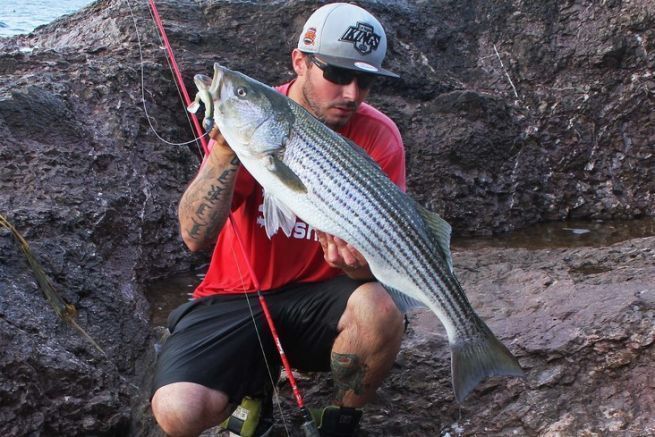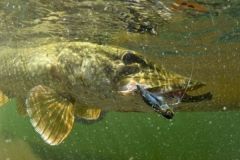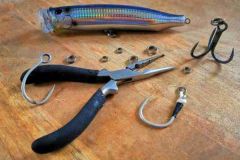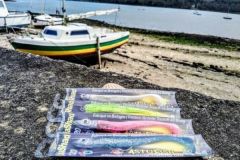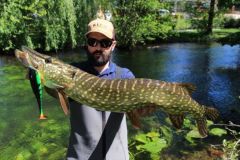1 - Increase the size of the lures
Using larger lures has two objectives. Firstly, to keep the small fish away from the lure, and thus not "waste time" with them, which on some spots can be very numerous. The second objective is to interest more the big fish by proposing them a prey of beautiful size which corresponds more to their usual menu. Big bass (10kg and more) feed on crustaceans and fish, so they do not have a small appetite and you should not hesitate to increase the size of the lures.
2 - Going off the beaten track
Easily identifiable spots, such as lagoon exits, are also the most popular. For a search of big bass, it is better to leave these places and venture into isolated areas. By experience, the most beautiful subjects stay closer to the bottom than the smallest ones. It is therefore necessary to look for deep places, often, the steep cliffs will be the only ones able to give enough depth to hope to fish for big bass from the shore.
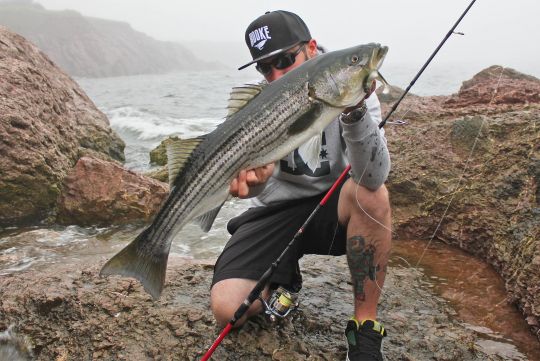
3 - Going out in bad weather
It is certain that fishing in the rain or in strong winds is less pleasant than fishing on a sunny day. However, this bad weather is often the opportunity to find big bass on the coasts that take advantage of high seas or rivers that discharge a lot of water to feed. A bad weather, combined with a high tide coefficient is without any doubt the time to go to the water's edge.
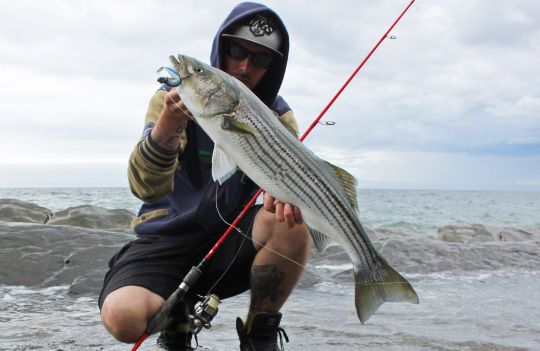
4 - Accepting to have less keys
Finally, all the previous points lead to this last point which is patience. Psychologically, you have to be prepared to have only one hit in 4 four hours of fishing and have confidence in the spot fished. On the other hand, the satisfaction that results from catching a big fish is unparalleled.

For a specific search for big fish, it is better to go to destinations further south such as Cape Cod or Nova Scotia, even if the Gaspé and New Brunswick have some nice surprises in store.
